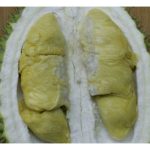Honestly, using sulphate of potash (SOP, K₂SO₄) on oil palm is not necessarily a waste, but whether it’s worth the higher cost compared to potassium chloride (KCl) depends heavily on soil type, drainage, and crop condition. Let’s unpack that in context.
The usual situation: KCl as the default choice
For most oil palm plantations, potassium chloride (KCl) is the standard potassium source. It’s cheaper, widely available, and provides high K₂O content (about 60%). Oil palm is a heavy feeder of potassium — vital for fruit bunch formation, oil synthesis, and overall vigor. Since palms are generally tolerant to chloride, KCl gives the best return per ringgit spent under normal soil and drainage conditions.
In well-drained inland soils or coastal alluvial soils where rainfall can leach excess chloride, KCl works perfectly fine. In fact, studies across Malaysia and Indonesia have shown that palms receiving KCl produce FFB yields equivalent to those given SOP, at a much lower fertilizer cost.
When SOP makes sense
Sulphate of potash (SOP) contains potassium and sulphur but no chloride. It’s usually reserved for chloride-sensitive crops like tobacco, fruits, and vegetables. However, certain oil palm conditions justify its use:
- Poorly drained or saline soils – In waterlogged peat or coastal soils with salt influence, chloride accumulation can worsen stress, leaf scorch, or nutrient imbalance. Here, SOP can reduce chloride load and improve root health.
- High chloride irrigation water or sea-spray zones – Near coasts, where salt spray or brackish groundwater already supply excess chloride, switching to SOP avoids compounding the issue.
- Deficient sulphur soils – SOP contributes sulphur (around 17–18%), which can be beneficial in sulphur-poor inland soils where ammonium sulphate isn’t part of the fertilizer mix.
- Nurseries or early-stage palms – Young palms are more sensitive to chloride. In early stages, SOP may give better root development and leaf appearance.
Cost-benefit perspective
SOP typically costs 2 to 3 times more than KCl. Unless one of the above conditions applies, that extra expense rarely translates to a proportional yield gain. In well-managed, mineral soils with good drainage, palms cannot distinguish much between K from KCl and K from SOP — the yield difference is negligible.
For example:
If 1 hectare of mature palms needs 3 kg K₂O per palm per year (~250 kg KCl), switching entirely to SOP could double the fertilizer cost without a measurable yield increase. The money would be better spent on improving field maintenance, liming, or balanced magnesium nutrition.
In conclusion
Applying SOP on oil palm isn’t wasteful — but it’s only justified in specific stress or soil conditions. For most plantations, KCl remains the most cost-effective and agronomically sound option. Think of SOP as a premium input for special cases — a corrective or protective measure, not a routine replacement.
In other words:
“Use SOP where you must, not where you can.”
Source: Professional Platform
Note: For Reference Only










